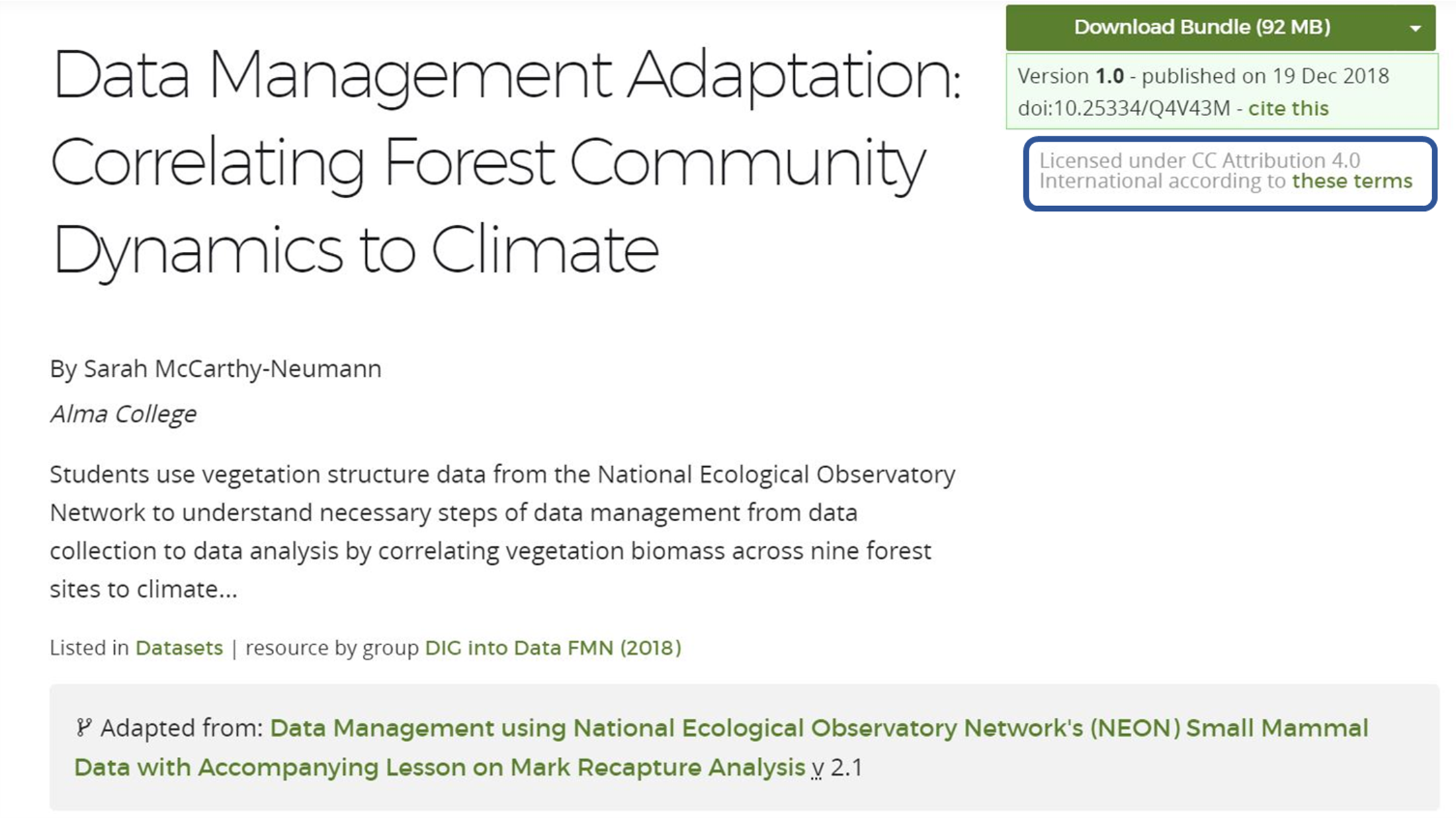Objectives
After completing this unit you will be able to:
- Evaluate licenses on QUBES resources.
- Interpret Creative Commons licenses.
Licensing
While Open Education is made possible by open licenses, not all six of the Creative Commons licenses offered on QUBES are "open." It is essential to review the licenses on a resource before publishing an adaptation of the work. Note though, that these licenses matter around sharing your adapted work. Even if material is licensed conservatively, you can still use and adapt the material for use in your own classroom. A close evaluation of licenses is important when you decide to share your adaptation of a work.
Creative Commons
Learn more about the Creative Commons licenses from Creative Commons themselves! You can choose to watch the video below, read the content on the About the Licenses page on Creative Commons, or both!
Breaking Down the Licenses
License Chooser
Another great resource from Creative Commons is their License Chooser. It is a simple, interactive guide to choosing a license for your work based on your circumstances and preferences. While it does not directly evaluate an existing license, it shows you the process of arriving to a license.
|
Explore the License Chooser. Answer the questions as if you are licensing an original work. Try to find the combinations that result in all six different licenses. |
Licenses on QUBES Resources
All QUBES resources require an author to specify license terms before publishing. The license information is visible beneath the "Download" button and version information. In the screenshot below, the license information is inside the blue box. You can also click the image to see the license on the live record.
Practice
Use "Why are Cells Small? Surface Area to Volume Ratio" as an example resource to complete the Knowledge Check.
- Open "Why are Cells Small? Surface Area to Volume Ratio"
- If desired, open About the Licenses.
- Complete the Knowledge Check.
Why are Cells Small? Surface Area to Volume Ratio
Version: 1.0


